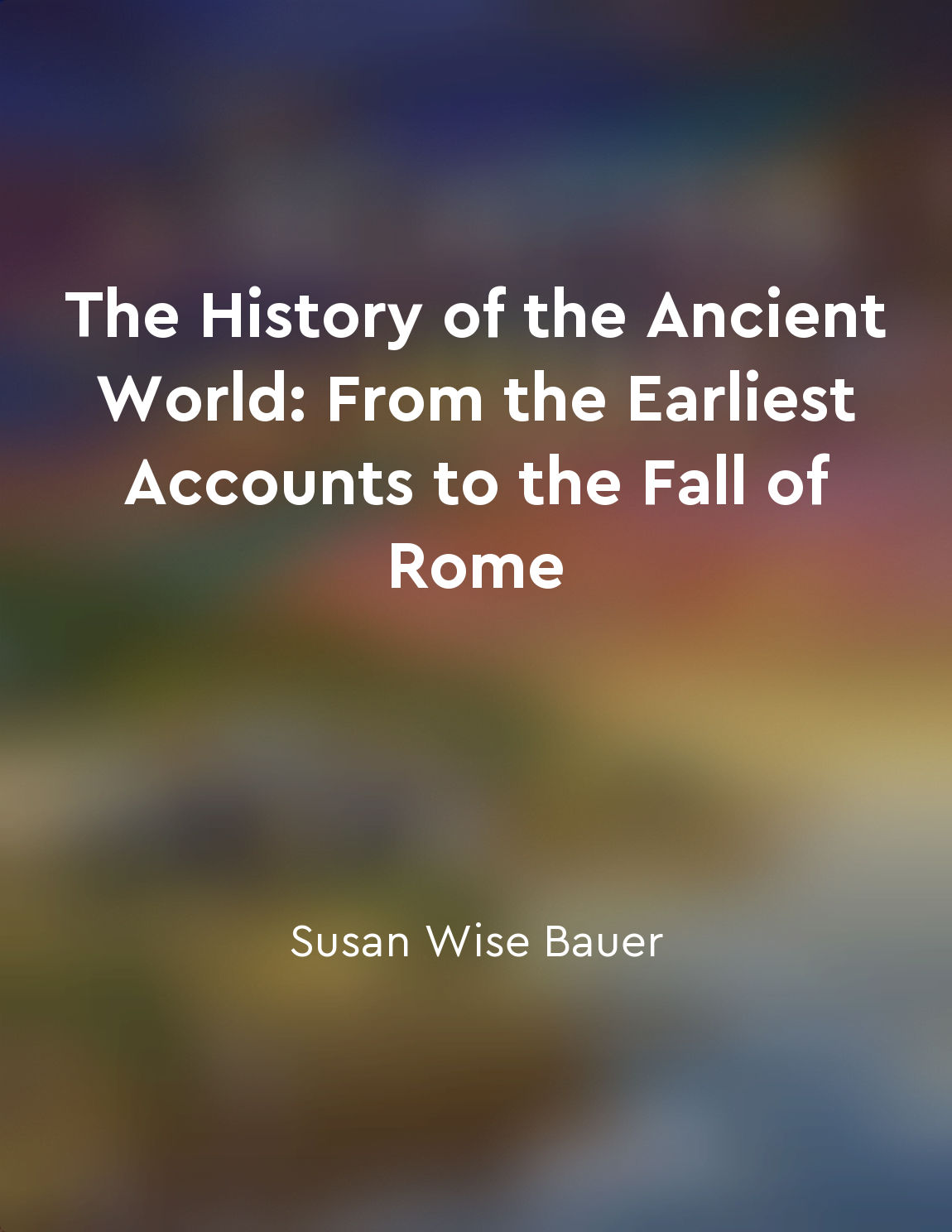Division of the Empire from "summary" of History of the Decline and Fall of the Roman Empire by Edward Gibbon
The Roman Empire was vast and powerful, stretching from Britain to the Middle East. However, as time passed, it became increasingly difficult for one ruler to effectively govern such a large territory. This led to the concept of dividing the empire into smaller administrative units, each with its own ruler. The division of the empire was not a sudden decision, but rather a gradual process that unfolded over several centuries. The first division occurred in 285 AD when Emperor Diocletian split the empire into two halves, known as the Eastern Roman Empire and the Western Roman Empire. Each half was governed by its own emperor, who was responsible for managing the affairs of his respective region. This division was intended to make the empire easier to govern and defend. By creating smaller administrative units, the emperors hoped to better control the vast territory of the empire. However, this division also had unintended consequences. The two halves of the empire began to drift apart, both politically and culturally. Over time, the division of the empire became more pronounced. The Western Roman Empire faced increasing threats from barbarian invasions, while the Eastern Roman Empire continued to thrive and expand. This led to a growing sense of rivalry between the two halves, as each vied for power and influence. The division of the empire ultimately contributed to its decline and fall. The Western Roman Empire was unable to withstand the pressures of invasion and economic collapse, leading to its eventual collapse in 476 AD. The Eastern Roman Empire, known as the Byzantine Empire, continued to exist for another thousand years before finally falling to the Ottoman Turks in 1453.- The division of the Roman Empire into smaller administrative units was a response to the challenges of governing such a vast territory. While it was intended to make the empire more manageable, it ultimately contributed to its decline and fall. The division between the Eastern and Western Roman Empires created a sense of rivalry that weakened the empire as a whole, leading to its eventual collapse.
Similar Posts

Examine the art and literature of the ancient world
The art and literature of the ancient world offer a window into the cultural and intellectual achievements of civilizations tha...
The rise of Germanic tribes further divided the empire
The increasing power of the Germanic tribes presented a significant challenge to the unity of the Roman Empire. As these tribes...
The loss of territories in Africa and the Middle East weakened Rome's resources
The Roman Empire, once a vast and powerful entity, began to experience a decline in its fortunes as it lost control over territ...
The lack of a strong centralized government contributed to Rome's fall
The Roman Empire, once a mighty force that dominated vast territories, faced a gradual decline that eventually led to its fall....

Discuss the evolution of political systems and hierarchies
The development of political systems and hierarchies in ancient societies was a gradual process that evolved over centuries. In...
Public health measures and effectiveness
The fate of Rome hinged on the effectiveness of public health measures. Disease was a constant threat, stalking the crowded cit...
The rise of Christianity changed the social fabric of Rome
The growth of Christianity in the Roman Empire marked a significant shift in the social dynamics of the time. With its emphasis...
Expansion of the Ottoman Empire
The power of the Turks, after the fall of Bagdad, was exercised by the Sultan of Iconium, who beheld with a jealous eye the con...

